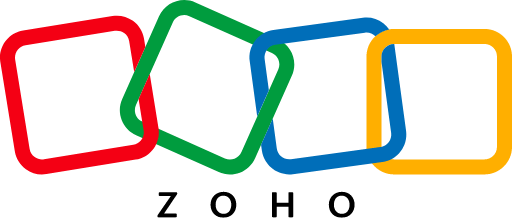![7 Ways to Get a List of Cell Phone Numbers [Tools]-festured-image](https://6052405.fs1.hubspotusercontent-na1.net/hubfs/6052405/2023%20-%20Blog/EN%20SEO%20blogs%20%28Product%20use%20case%20keywords%29%20%5B%2B%20FR%2c%20ES%20and%20DE%20variations%5D/List%20of%20cell%20phone%20numbers/EN_list-of-cell-phone-numbers-card.png)
How to Build a Prospecting List [8 Steps & Best Practices]

Your life is about to get way easier.
In this post, we’ll show you how to build a prospecting list in eight simple steps.
Here’s what you need to do:
- Know your product inside-out.
- Define your buyer personas.
- Use a sales automation tool.
- Invest in a good CRM.
- Prioritize your prospects.
- Personalize your outreach.
- Enrich your list with clean data.
- Consider data compliance.
8 steps to building a prospecting list
1. Know your product inside-out
First and foremost, you need a clear understanding of what you’re trying to sell. As a sales development representative (SDR), you must grasp:
- What your product or service does.
- The pain points it solves for your customers.
- How existing customers like to use it.
- What outcomes can prospects expect from your product.
- How those outcomes address the challenges and pain points of your users.
Understanding your unique value proposition lets you see which customers will benefit from your product.
So, how do you go about gaining this understanding? 🤔
- Check out sales calls on Gong.
- Read review sites like G2 and Trustpilot.
- Look at your competitors and why customers use them.
- Look out on LinkedIn and other social networks for posts your company’s been tagged in.
- Learn from feedback on your own cold calls why prospects use a solution like yours.
This knowledge can be used as a map to find and communicate with your high-value prospects.
Without this understanding, you risk building a list of contacts who won't benefit from your offering at all.
2. Define your buyer persona
Your B2B prospecting list won’t take you very far if you don’t start with a well-defined ideal customer profile (ICP) and buyer persona.
Your ICP outlines the most appropriate companies for the problem your product or service solves.
The buyer persona, on the other hand, is about the individuals within that ICP.
These qualities can be used to form fictional customer representations for each of your key audience segments.
When building your ICP, consider:
- Company size.
- Industry.
- Demographics.
- Legality.
- Any service level agreements (SLAs).
Demographic and behavior profiling are key for defining B2B customer profiles.
The PACTT prospect qualification framework, talked about by sales leaders like Shabri Lakhani, can help you ask the questions that create your personas.
- Pain. What are this customer’s pain points? Are they solvable by your product/service?
- Authority. Does this contact have decision-making authority? Do they have the necessary buying power?
- Consequence. What impact will your product or service have on this prospect? What outcome will it help them achieve?
- Target profile. Does this prospect meet the demographic and behavioral profile of your target audience?
- Timing. What are this prospect’s timelines? How long will a decision take, what is their budget cycle, when is their end-of-year, etc?
Starting with a well-defined ICP and buyer persona focuses your prospecting efforts. You target the potential customers most likely to convert.
3. Use a sales automation tool
Sales automation tools streamline the process of building a prospecting list.
An example of a prospecting tool is Kaspr. It has a verified database of 500M+ phone numbers and email addresses, so you can find accurate contact details faster.
You can use the information to create your lists and effectively connect and engage with your prospects.
Here’s how it works 👇
Collect lead data
Kaspr’s LinkedIn Chrome Extension helps you get instant access to phone numbers, email addresses and company information. You can then easily transfer this information to a web app or your other sales tools.
The data can be collected in a few different ways. By prospecting individual LinkedIn profiles or in bulk from any LinkedIn list, post, group or event.
Try this interactive demo 👇
Kaspr can also help you access contact information for lists you’ve generated using LinkedIn Sales Navigator or from profiles you find in LinkedIn searches.
Create a prospecting list and organize your leads in Kaspr’s dashboard
Divide your new prospects into lead lists based on factors like audience segments. That way, you can create personalized outreach pipelines.
Once you’ve created your lists, you can segment leads into the appropriate list right from the LinkedIn Chrome Extension.
Lists aren’t just for new prospects. You can also use them to keep track of your current and past contacts. Consider making lists for:
- Contacts by industry.
- Company size/number of seats
- Current customers.
- Closed-won buyers.
- Closed-lost deals.
4. Invest in a good CRM
Investing in good customer relationship management (CRM) software can make managing and tracking your list of prospects a heck of a lot easier.
It’s way less time-consuming than trying to keep up with your customer base in spreadsheets. It also reduces human error.
But the #1 benefit is that a CRM empowers B2B sales teams (and marketing teams!) to use data more efficiently.
By using a CRM, you can automate the process of tracking lead-specific data like purchase history and performance figures.
Here are just a few ways this data can optimize future prospecting efforts:
- Syncing data from your prospecting tools.
- Identifying which channels produce the best leads.
- Estimating your average sales process length and quantifying how slow responses impact close rate.
💡 Kaspr integrates with popular CRMs like HubSpot, Salesforce, Pipedrive, and more, so you can seamlessly integrate your prospecting software with your customer relations hub.
You can also export your sales prospect lists as CSV or Excel files and then import to your CRM of choice.
5. Prioritize your prospects
Lead scoring is the process of qualifying and prioritizing prospects in your list by assigning numerical values.
Qualified prospects are potential customers who will likely purchase your product or service.
They fit your ICP and buyer personas, have the need and budget for your product, and understand the value your product will bring to their company.
Before any outreach, take your prospect list and rank leads based on the information you already have. That way, the bulk of your initial outreach efforts will go to semi-qualified leads.
Once you get a conversation going with a potential client, you can gather information on their purchase intent, need, budget, and timeline.
🔝 Simplify the lead qualification process by revisiting the PACTT framework you used to build your buyer personas.
6. Personalize your outreach
If you want your prospects to trust you, you need to portray yourself as a subject matter expert who provides value from the start.
Doing this requires a level of personalization beyond simply customizing the name field.
With outbound lead generation, your prospects may not even know they have a solvable problem. It’s your job to show them the problem, how your product can solve it, and what outcomes they can expect as a result. This requires a good understanding of each prospect’s unique pain points.
When you speak directly to your prospect’s pain points from the very first touchpoint, you break through the noise and hook their attention.
Remember - you need to personalize not only the content of your touch points but their cadence and format as well.
A prospect who is ready to book a demo might appreciate a personal phone call.
A prospect not yet familiar with your product and how it can help them would prefer a sequence of nurture emails catered to their level of understanding and specific needs.
Pro tip: Click the phone and email buttons to contact individual prospects right from your Kaspr dashboard.
The more interest your prospects show, the more personalized your correspondence should be.
💡Struggling to personalize your outreach? Rachel Goldstone, Director of Sales Development at Cognism is here to help:
7. Enrich your prospect list with clean data
Keeping prospect data up to date is crucial to understanding where you stand with each potential lead. Without an accurate understanding of the prospect’s needs, level of interest, and previous interactions, you cannot effectively personalize future correspondence.
And if your main point of contact leaves the organization, transitioning to a new prospect at the company before the interest fades can be the difference between closed-lost and closed-won.
How to keep lists accurate:
- Use a software like Kaspr, so you can enrich your data on a regular basis.
- Maintain regular communication with your prospects to verify and update contact details.
- Use CRM software to centralize and simplify the process of tracking and updating prospect details.
There comes a time when every list needs data cleansing. This part of the enrichment process identifies and solves incorrect, incomplete, or duplicate data in your prospecting list.
Signs you need to run a data cleanse:
- Low connection rates.
- Low phone connection rates.
- High email address bounce rates.
- Email auto-replies.
- Data on DNC lists.
To cleanse and refresh your data in Kaspr, head to your dashboard and start an automated workflow using the “Enrichment” template.
This enrichment tool allows users to choose what list to enrich, as well as the contact details you want to refresh (phone, email, or both).
8. Consider data compliance
Complying with data privacy regulations like the General Data Protection Regulation (GDPR) and California Consumer Privacy Act (CCPA) is vital to safeguarding both the privacy of your potential customers and your company’s legal standing.
By maintaining alignment, you show your potential customers that you respect their right to privacy and control over their data. This can enhance the trust and credibility of your company, which fosters stronger customer relationships over time.
Maintaining compliance also prevents your company from facing dangerous data breaches and hefty financial fees.
Kaspr helps companies safeguard prospect privacy by maintaining a GDPR and CCPA aligned database.
FAQ about prospecting lists
Still have questions about how to build a prospecting list? Let’s recap the basics in a few FAQs.
What is a prospecting list?
A prospecting list is a collection of potential customers and their contact information. The potential customers, also called leads, should align with the company’s ICP and buyer personas.
They are identified based on criteria like demographics, behavior, company location, industry, and other relevant factors.
Contacts on a prospecting list are used for sales and marketing outreach efforts through LinkedIn, cold calling, email marketing, and in some cases even direct mail and targeting advertising.
What is the best tool for building a prospecting list?
Kaspr is the best sales prospecting tool for building a list of high-quality leads with accurate contact data.
The LinkedIn Chrome Extension allows rapid sourcing of contact data from:
- Individual LinkedIn profiles.
- LinkedIn search results.
- Sales Navigator lists.
- LinkedIn posts.
- LinkedIn Events.
- LinkedIn Groups.
Should you buy or build a prospecting list?
Companies can buy a prospecting list pre-filled with contacts in their industry, or they can build one from scratch. There are pros and cons to both methods.
Buying a prospecting list can save time. It also grants immediate access to leads. These pre-made lists are often more general, making them better-suited for companies with a broad ideal customer profile.
On the downside, buying a prospecting list can result in quality/accuracy concerns, compliance risks, and the potential for overuse.
Because these lists are sold to multiple companies, the contacts have likely been contacted by multiple competitors and may immediately opt out due to annoyance or overwhelm.
When you build your own list, you tailor your prospecting to a specific ICP/buyer persona and yield better quality leads. This also puts you in charge of your own data accuracy and compliance.
The downside to building your own list is that it takes time. No instant gratification here.
But the benefits of building your own prospecting list far outweigh that one negative.
Try Kaspr for free
Ready to build a killer prospecting list? Kaspr can help. 💪
Use Kaspr’s Chrome Extension to instantly gather contact information from any LinkedIn profile. Sign up for free today.
Join Kaspr’s 50K+ users:
✅ 500M+ accurate and up-to-date email addresses and phone numbers.
✅ GDPR and CCPA aligned.
✅ Credit-card-free sign-up.
✅ Fully self-service.
✅ Custom plans available.
✅ Analytics and ROI tracking included.
✅ Free to get started.
Accurate European contact data
Get accurate data for your prospects and connect with your favorite sales tool







